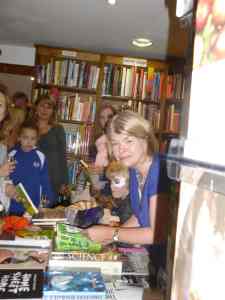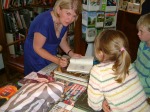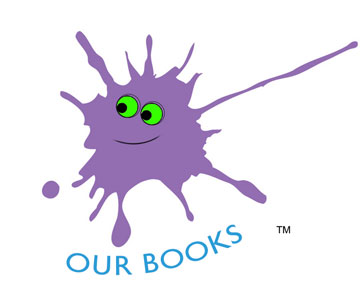It’s been a good year for independent publishing. Mark Coker of Smashwords is feeling confident for the future, as is Electrik Inc.
But what about the many stages writers go through before they press the button that uploads their print on demand or ebook file? I thought I’d mention a few of the important stages we go through, from the very beginning.
You’ve written your novel. It’s complete. What now? A good start is having an online presence on some of the excellent writers’ forums out there: Here are just a few:
absolutewrite.com
youwriteon
writers-forum.com
We’ve found most writers’ forums have members who are very generous with information and help for all stages of writing and book production.
Also, consider having your entire manuscript assessed by a professional editor. This kind of help is invaluable because most writers don’t see where the plot is weak, most writers don’t see their own typos. See under for more tips on professional editing.
?*********************? This row of asterisks represents what you should be doing right now. Go on, guess. 🙂 I’ll tell you later.
Post some of your work on a writing forum. There are lots of writing forums out there, just google them. Getting feedback on your work is invaluable. The general comments will tell you if your novel is looking professional, or is ‘nearly there’. Too many typos? Grammar a bit dodgy? Well, that takes us to the next stage, one which every serious writer should consider before even thinking about pressing the ‘publish’ button:
Get yourself a professional editor and/or proofreader. There are lots out there, some better than others. Without one, your novel is destined to stay in the ‘amateur’ corner. That’s why traditional publishing houses have editors, because even people who work as editors need other editors – they know every writer needs another pair of eyes. A professional editor won’t just tell you how great your novel is, though hopefully they’ll do that too, but they’ll suggest improvements, mention when pace stalls and what you could tighten to get it moving again, when dialogue goes on too long, or where conflict is non-existent.
The editorial process we employ for Electrik Inc books is stringent, from reading the novel that’s put forward, assessing it and suggesting rewrites, to line editing, proofreading, and advising on blurb and cover.
Traditional publishers don’t send a book out into the world without investing time and editorial services on it, and neither should you.
Organise your cover. It’s early days yet, and you may still have lots of corrections to do in your body copy, but you should know what kind of image you want your book to present to the world. Your cover is your shop front. It’s vital to get it right. You’ll need an illustrator (see our previous blog on this) and a graphic designer: someone who can take your image file and place the title, author name and any strap line (the bit that entices your reader into the book). Sometimes one person does both. If you’re doing print on demand as well as ebook, then your graphic designer will ensure the cover meets the printers’ guidelines (remember, front AND back cover for print). Ebooks are easier in that you need only the front, but it’s still wise to have a graphic designer place all type and make sure the picture is the right size.
Buy ISBN for your book (Smashwords offers one free). If you’re producing an ebook with Amazon, for example, your ISBN will be different to the one you put on the inside page of your print-on-demand book. You can buy a single ISBN for £15 from the Independent Publishers Network. However, they ask that you become a member of their organisation first. This appears to be free but do check the small print: http://www.ipubnet.co.uk/buy-isbn-numbers/
Alternatively, contact nielsenbook.co.uk and buy a set of ten for £132. Remember, if you change something in the bodycopy of your e-book, you need only re-upload the file. But if you make any changes to the physical copy of your book, that will require a new ISBN.
You’ll have to decide on which print on demand or e-book company is best for you, Put self publishing into Google and you’ll be knee deep in companies vying for your manuscript and your money, but here are a few to start with:
Createspace.com
Lightningsource.com
Lulu.com
Smashwords.com
Formatting the interior file. There are different formatting requirements for ebooks and physical books. Smashwords has a list of designers for ebook covers, and people who will format your book for you. They also have downloadable, easy-to-follow instructions for this on their site – well worth reading if you want to do the formatting yourself.
CreateSpace also offers lots of help, including providing templates for physical books. And they have a good forum where people discuss formatting problems. You can often find the answer you’re looking for here – post your question and some kind independent publisher will try to answer it, whichever company you’re printing with. Lightning Source has a document setting out its print requirements, too.
If you decide on print on demand as well as ebook, it’s wise to get a physical proof of the paperback. It will cost you a little more, but not as much as if you pass it all unseen and something isn’t right.
Yes, formatting takes time to get right, but it’s worth persevering if you want complete control over your work. However, you can also hire people to do the formatting for you and usually it isn’t too expensive, though of course that depends how large the book is. As mentioned, Smashwords has a list of recommended designers and formatters. This is another area where writers’ forums can help. Ask for recommendations, or check online.
Okay, your novel is ready. You’ve had some great feedback, everyone loves it. You’ve paid a professional editor to line edit it for you. You’ve taken in their suggested corrections, you’ve paid for a proof reader. You’ve got the ISBN and your cover is looking fab – all ready to go. You’re going to upload it to print on demand, get some paperback copies, and have the ebook available for everyone who wants it. You’re even thinking of having a launch. Yippee.
Now you just have to sell it…. which takes us right back to that row of asterisks at the beginning of this blog:
************************ Marketing begins before production. Not after it.
(see our previous blogs for tips on marketing and independent publishing.)
These are just some of the steps you have to take once you decide independent publishing is for you. Don’t just write a book and throw it out into the ether – that’s what clogs ups the online shelves with poor produce.
Your readers deserve the best, and so does your novel.
Good luck.
Kay Leitch
Author of Treasure This
kaywritesheretoo.wordpress.com
 Andy Weir, author of The Martian, first published this story on his own website one chapter at a time. He’d been posting short stories and chapters of different books on-line for ten years, growing a dedicated following. His readers asked him to produce an ebook version of The Martian to make it easier to read, and this is when the book took off. Suddenly, he had an agent, a book deal and Fox Studios making the movie. Interestingly, the author had once taken three years off work to try and sell his writing to a traditional publisher and failed.
Andy Weir, author of The Martian, first published this story on his own website one chapter at a time. He’d been posting short stories and chapters of different books on-line for ten years, growing a dedicated following. His readers asked him to produce an ebook version of The Martian to make it easier to read, and this is when the book took off. Suddenly, he had an agent, a book deal and Fox Studios making the movie. Interestingly, the author had once taken three years off work to try and sell his writing to a traditional publisher and failed. Wattpad has 8 million monthly visitors and a high proportion of YA users. Writers post their books chapter by chapter, and give it away for free. But some authors see it as a price worth paying in order to find a readership. Lily Carmine’s story, The Lost Boys, clocked up 33 million readers! It was quickly snapped up by Random House.
Wattpad has 8 million monthly visitors and a high proportion of YA users. Writers post their books chapter by chapter, and give it away for free. But some authors see it as a price worth paying in order to find a readership. Lily Carmine’s story, The Lost Boys, clocked up 33 million readers! It was quickly snapped up by Random House. Amazon’s Kindle Direct Publishing (KDP) enables authors to independently publish their books straight to Kindle. It’s not a passport to getting your work noticed, but if your writing stays in a drawer no-one is going to read it! Producing an ebook is less expensive than making a physical book and is a good way of dipping your toe into the water to see if it sells. Tom Watson, author of the picture book Stick Dog, produced his own ebook because he felt his work was “too far out there” for a traditional publisher. It went on to gain a massive following through word of mouth. Our Electrik Inc books are all available as ebooks.
Amazon’s Kindle Direct Publishing (KDP) enables authors to independently publish their books straight to Kindle. It’s not a passport to getting your work noticed, but if your writing stays in a drawer no-one is going to read it! Producing an ebook is less expensive than making a physical book and is a good way of dipping your toe into the water to see if it sells. Tom Watson, author of the picture book Stick Dog, produced his own ebook because he felt his work was “too far out there” for a traditional publisher. It went on to gain a massive following through word of mouth. Our Electrik Inc books are all available as ebooks.













